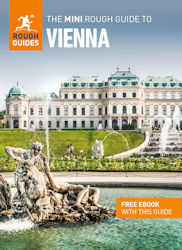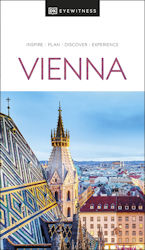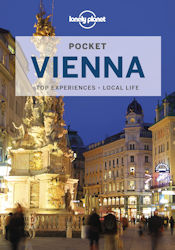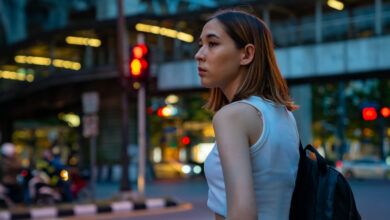Vienna is one of the most beautiful cities in Europe, with a rich history and a vibrant cultural scene. Located in the heart of Austria, Vienna is the country’s capital and largest city. It is known for its magnificent architecture, world-class museums, and famous coffeehouses.
Vienna’s history dates back over 2,000 years, and it has been the capital of the Austrian Empire and the Austro-Hungarian Empire. Its long and colourful history is reflected in the city’s many architectural styles, ranging from Gothic and Baroque to Art Nouveau and Modernist.
One of the city’s most famous landmarks is the Hofburg Palace, the former imperial palace of the Habsburgs. This vast complex of buildings includes the Imperial Apartments, the Sisi Museum, and the Spanish Riding School. The palace also houses the Austrian National Library, one of the world’s largest and most important libraries.
Another must-see attraction in Vienna is St. Stephen’s Cathedral, a stunning Gothic masterpiece that has dominated the city’s skyline for centuries. Visitors can climb to the top of the cathedral’s south tower for breathtaking views of the city.
Vienna is also home to some of the world’s best museums, including the Kunsthistorisches Museum, which houses an incredible collection of art and artefacts, and the Museum of Natural History, which has a vast collection of dinosaur fossils and other natural wonders.
One of the things that sets Vienna apart from other cities is its coffeehouse culture. Viennese coffeehouses are not just places to grab a cup of coffee – they are social hubs where people come to relax, read the newspaper, and chat with friends. Many of these coffeehouses have been in operation for over a century and are an important part of Vienna’s cultural heritage.
Heading for Vienna? Grab a travel guide
Vienna is also famous for its music, and it has been home to many of the world’s greatest composers, including Mozart, Beethoven, and Strauss. The city has a rich tradition of classical music, and visitors can attend concerts at the Vienna State Opera, one of the world’s most renowned opera houses, or at the Musikverein, home of the Vienna Philharmonic Orchestra.
In addition to its many cultural attractions, Vienna is also a great place for foodies. The city has a thriving food scene, with a wide range of restaurants serving everything from traditional Austrian cuisine to international dishes.
In conclusion, Vienna is a city with something for everyone. Its rich history, stunning architecture, world-class museums, and vibrant cultural scene make it one of the most fascinating and beautiful cities in Europe. Whether you are interested in history, art, or music, or just want to relax and enjoy the coffeehouse culture, Vienna is a city that will captivate and inspire you.
Best Time to Visit Vienna
The best time to visit Vienna depends on your preferences and interests, as the city has something to offer throughout the year. Here is a brief overview of the seasons in Vienna and what to expect:
Spring (March to May): Vienna in spring is a beautiful time to visit, with milder temperatures and the city coming back to life after the winter. The parks and gardens are in full bloom, and there are several festivals and events, including the Vienna City Marathon and the Vienna Festival.
Summer (June to August): Vienna can get quite hot and crowded during the summer months, but it is a great time to enjoy the city’s many outdoor cafes and restaurants, as well as its parks and gardens. There are also several music festivals and outdoor concerts, such as the Vienna Jazz Festival and the Danube Island Festival.
Fall (September to November): Vienna in the fall is a lovely time to visit, with cooler temperatures and fewer tourists. The autumn colours in the parks and gardens are stunning, and there are several wine festivals and cultural events, including the Vienna Design Week and the Vienna Art Week.
Winter (December to February): Vienna in the winter is a magical experience, with Christmas markets, ice skating, and holiday lights. However, it can also be quite cold and dark, and the city can be crowded with tourists during the Christmas and New Year holidays.
Overall, the best time to visit Vienna depends on what you are looking for. If you want to enjoy the city’s outdoor attractions and festivals, then spring and summer are the best times to visit. If you prefer cooler temperatures and fewer crowds, then fall is a good time. And if you want to experience the city’s festive holiday season, then winter is the perfect time to visit.
Average Temperature in Vienna
The average temperature in Vienna varies greatly depending on the season. In general, Vienna has a temperate continental climate, with warm summers and cold winters. Here is a breakdown of the average temperature in Vienna throughout the year:
- Spring (March to May): Average high temperatures range from 9°C (48°F) to 19°C (66°F), and average low temperatures range from 2°C (36°F) to 10°C (50°F).
- Summer (June to August): Average high temperatures range from 23°C (73°F) to 26°C (79°F), and average low temperatures range from 14°C (57°F) to 16°C (61°F).
- Fall (September to November): Average high temperatures range from 9°C (48°F) to 20°C (68°F), and average low temperatures range from 4°C (39°F) to 10°C (50°F).
- Winter (December to February): Average high temperatures range from 2°C (36°F) to 4°C (39°F), and average low temperatures range from -3°C (27°F) to -1°C (30°F).
It’s important to note that these are only averages, and temperatures can vary widely from day to day and even within the same day. Additionally, Vienna is known for its changeable weather, so it’s a good idea to check the weather forecast before visiting and pack appropriate clothing for the season.
Credits
Photo: Belvedere Palace, Vienna, Austria. Photo by: Sami Ullah on Unsplash






